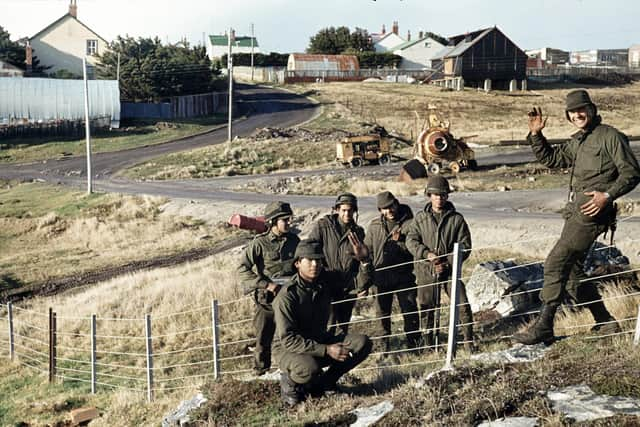Falklands War: When did it start, how long did the war last, where are the Falkland Islands, which countries were involved in the war, how many people died, what is an undeclared war, did Argentina invade, why are Falkland Islands also called Islas Malvinas and more for Falklands 40
and live on Freeview channel 276
But how much do you actually know about the conflict?
We have pulled together a guide of the key information you need to know about the Falklands War as the anniversary arrives.
Find out more here:


When did the Falklands War start?
The conflict began on April 2, 1982, when Argentina launched amphibious landings, known as Operation Rosario, on the Falkland Islands.
Advertisement
Hide AdAdvertisement
Hide AdHowever tensions had been building before that date, particularly with an incident on March 19 of that year, when the Argentine flag was raised at South Georgia Island.
How long did the Falklands War last?
The conflict lasted for 10 weeks – a ceasefire was declared on June 14, 1982.
Where are the Falkland Islands?
The Falklands is an archipelago – a collection of islands – in the South Atlantic Ocean.
They are located a few hundred miles off the east coast of Argentina (about 300 miles).
Which countries were involved in the Falklands War?
Advertisement
Hide AdAdvertisement
Hide AdBritain and Argentina were the two nations who were involved in the conflict.
SEE ALSO: Portsmouth named as one of many cities to mark 40th anniversary since Falklands War this year
What is an undeclared war?
The Falklands War is considered an ‘undeclared war' – which simply means that neither sides in the conflict issued an official declaration of war although both governments declared the Islands a war zone.
How many people died in the Falklands War?
A total of 904 military personnel died during the conflict.
Advertisement
Hide AdAdvertisement
Hide AdOf these 255 were British soldiers and 649 Argentinian soldiers were killed.
Three Falkland Islanders were killed by friendly fire.
Why are the Falkland Islands disputed?
The first confirmed European landing on the Falkland Islands came in 1690 with English captain John Strong who explored them while en route to South America.
He is credited with naming the strait that separates the two main islands, giving it the name Falkland in honour of Anthony Cary, 5th Viscount of Falkland – who was treasurer of the Navy and sponsored Captain Strong’s journey.
But a European settlement was not established until the 1760s, when the French set up Port Louis on East Falkland in 1764.
Advertisement
Hide AdAdvertisement
Hide AdThe first British settlement on the islands was set up in 1766 with the founding of Port Egmont.
The French turned Port Louis over to the Spanish in 1766.
Britain voluntarily left the islands in 1774 – leaving a plaque claiming the Falklands for King George III.
Argentina gained independence in 1820 and proclaimed sovereignty over the Falkland Islands.
Britain returned to the islands in the 1830s and the islands were made a Crown colony in 1840.
Advertisement
Hide AdAdvertisement
Hide AdTensions over the ownership of the Falklands for the next century with the UN inviting Britain and Argentina to try and resolve the dispute in 1965.
Why are the Falkland Islands also called Malvinas?
Captain John Strong named the Falkland Sounds strait in the 1690s, but the name wasn’t applied to the wider islands until the 1700s when British captain John Byron claimed them for King George III as ‘Falkland's Islands’.
The Spanish name for the islands is the Malvinas, which is derived from the French name for the archipelago Îles Malouines – given by French explorer Louis-Antoine de Bougainville in 1764.
Were the Falkland Islands uninhabited?
When Europeans arrived in the region, the islands were uninhabited – although it is thought that Fuegians people, who were the indigenous inhabitants from the southern tip of South America, may have visited the islands, but did not set up settlements.
Advertisement
Hide AdAdvertisement
Hide AdOur commemorative Falklands40 supplement will be available on Tuesday, April 5.
If you don’t live in Portsmouth you can still order a copy by clicking this link.
A message from the Editor, Mark Waldron
Subscribe here for unlimited access to all our coverage, including Pompey, for just 26p a day.
Comment Guidelines
National World encourages reader discussion on our stories. User feedback, insights and back-and-forth exchanges add a rich layer of context to reporting. Please review our Community Guidelines before commenting.
